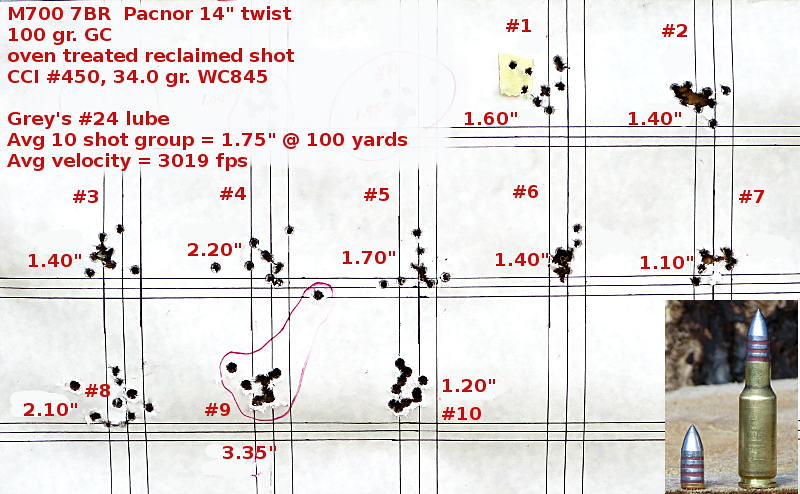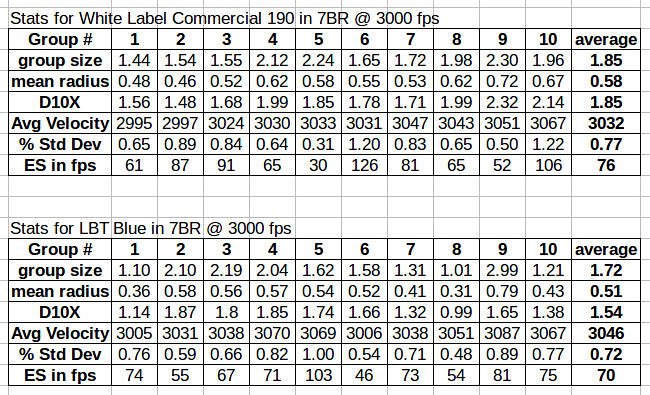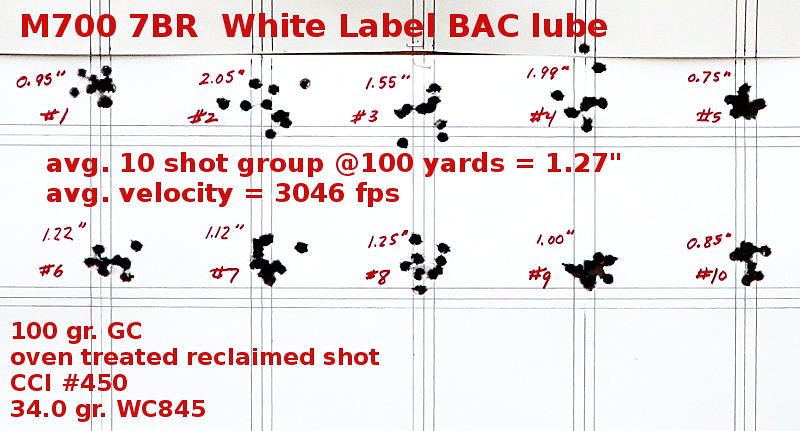I'm down to my last few globs of the discontinued Rooster HVR lube so I have no choice but to find a new favorite lube. Previous tests have given me a pretty good idea what will work and what won't, but nonetheless I'm going to conduct even more tests and let the results guide my final choice.
The plan is to shoot ten 10-shot groups with each lube at 3000 fps, without cleaning in between the 100 shots. Why? Because "cast bullets at 3000 fps” has a nice ring to it, don't you agree?
Even 100 shots each may not be enough to prove a statistically significant difference between some lubes, nonetheless "100 shots each" has a nice ring to it. :cool:
The tentative list of lubes to include in the test:
-- HVR as the previous “gold standard" -- LBT Blue (the so-called hard version) -- White Label Carnuba Red -- White Label Commercial 190 degrees -- White Label 2500 (preferred by Larry Gibson for hi-vel use, last I heard)
I may add one or two more lubes to the list, but it's not feasible to test every lube out there unless I win the lottery and retire. :D Once a new “gold standard” lube is chosen, I can always use it to do a one-on-one comparison with other lubes.
I thought about giving homebrew lubes another whirl. I've learned a few things since my last attempt at homebrew lube, and I suspect now I could equal HVR without too much difficulty. However, that could take some time and I never seem to have enough time. Also, I don't mind paying a few bucks for storebought lube because it's a minor cost compared to what I spend on powder, primers, barrels, etc.. I can always revisit homebrew lube later if the spirit moves me.
It takes the better part of a day to load and shoot 100 shots, allowing the barrel to cool for a minute between each shot and for 10 minutes or so between groups. At any rate after 100 full throttle shots at the bench I've had enough, so this comparison test may take several weeks or even months, depending on how often Mr. Murphy visits my range.
For today I shot HVR. This will be the control load, the “gold standard” against which the other lubes will be compared. I'm hoping one of the other lubes will prove to be at least as good as HVR.
The test rig and its control load:
-- Remington M700 switchbarrel bench rifle -- Pacnor 6-groove 14” twist 7BR which I have discussed in another thread -- 34.0 gr. WC845. It's not my favorite powder but it was sitting on the shelf, and that counts for something. :D -- CCI #450 primers -- 100 gr. GC spitzer -- J.R. brand reclaimed shot oven treated @470F -- nose sized to match the taper of the throat -- final sized 0.284” (the barrel's groove is 0.283") -- seated for 0.015” jam
Today's target. Group #0 was a warm-up group using wheelweight alloy, while groups #1 - 10 are the “official” groups using reclaimed shot. This will be the standard that other lubes are expected to at least equal.
I repeat for emphasis -- the barrel was not cleaned between groups! At the end of the day I pushed one patch through with Ed's Red, and the only reason I did that was to deter corrosion, not because the barrel was dirty. There was nothing on the patch other than some black carbon. If the barrel had been fouling we would expect groups to open up as more shots were fired, but that didn't happen. If anything groups became smaller and more consistent as more shots were fired, indicating a stable barrel condition. Pacnor makes a good barrel, and HVR is a good lube.

My chrono has no printer so this is as close as I can come to providing tangible proof of the velocities.











, I screwed up a shot by failing to return the rifle to battery. It was quite obvious because the rifle nearly fell out of the front rest when it recoiled, and the bullet was a wild flier. I don't like to dismiss fliers but in this case it was definitely operator error, so I disregarded that shot and fired a make-up shot. </p>
<p>Blue turned in several fine groups, but it also turned in some poor groups. :( Overall, Blue did much better than I expected, considering it has been a poor performer for me in the past, particularly in a revolver.</p>
<p>Today's luckiest groups:
<img src =)




, with an unlucky “heartbreaker” shot at 12 o'clock. :(
<img src =)

<img src =)













